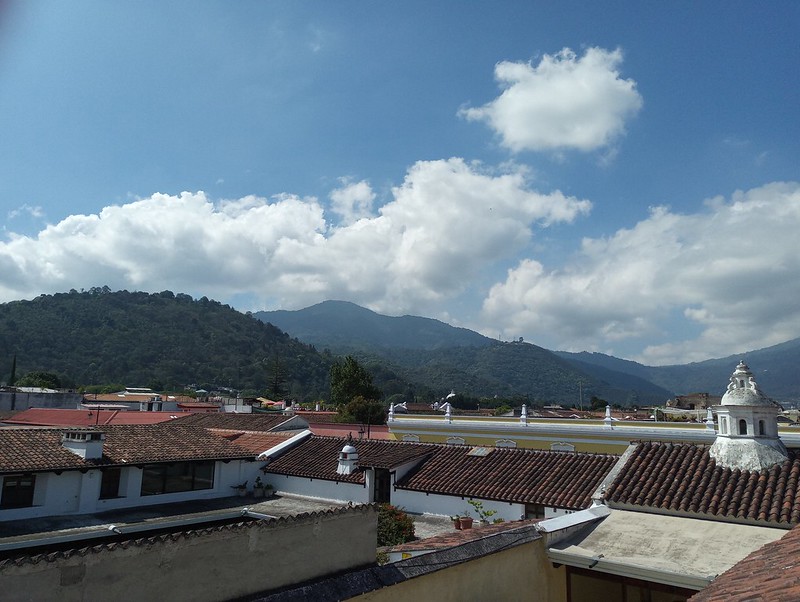I was keeping up with the news during the Maymester and on occasion called my parents to hear about what was happening with them and to catch up. I would be lying if I didn’t feel some form of accountability and responsibility to check in on my parents. For a long time, growing up as the child who could speak English the best meant I had to help my parents with so much: translating insurances, calling people about clinic services, and taking care of siblings when called to do so. Eventually, all this responsibility transferred onto me acting as a caretaker for my family: at times willingly and sometimes out of necessity.
I couldn’t help but feel guilty about leaving to go abroad, because I felt like I was leaving my family vulnerable. Using WhatsApp, I felt relieved to hear from my parents whenever I called. As great as it was to hear from them, after the end of a call, I did worry about what would happen after.
During my study abroad, there was news about potential ICE raids, and I saw on Facebook my friends working to organize and inform undocumented folks about what to do and where to avoid. Even though Austin was a target for leaked cities ICE was targeting, I felt nervous and anxious about the potential for my parents to be hit with one at their workplace, at the grocery store, the neighborhood, or even at the public services they make use of. I was so afraid and anxious about my family that I would be lying if I said it didn’t take away from the trip. This was always in the back of my mind: I was afraid that my family would be disrupted, and my siblings wouldn’t have my parents to look after them while I was away. When we (my parents and I) talked, we were afraid of what could happen, but my parents wanted to support me, and I wanted to support them as well. Those calls were important to my parents and even more for me.
My homestay mom would check-in on me occasionally, and I would tell her how I felt. She listened, and I was so appreciative of her for checking-in.
As I carried these fears, I did find space and time to feel calm and focused on the trip. My friend’s birthday was coming up and, unfortunately, it happened to be the weekend in which most of our classmates organized a hiking trip on a dormant volcano. By the time her birthday arrived, it was just four of us: her, me, and two other friends from class. It was still a very intimate moment. It was a rainy day in Antigua, and the three of us were at a cafe. We meant to study and be responsible, however it didn’t take hold for long. We did anything but study, and soon made our way to Casa Herrera, a UT facility that acts as our place for class.
Walking past La Merced Church while en route to the local coffee shop.
Enjoying an iced coffee with friends.
The program coordinator insisted that there be cake for my friend’s birthday, and we were excited to see what was in store for us. Once we all settled in, we had a small intimate group setting with the program coordinator, the study abroad coordinator, the professor. We all ate carrot cake, and it was some really good cake. Normally I’m picky about the icing on a cake, but this one was an exception. Once everyone had a slice, we talked among ourselves: our days, our weeks, and the news that’s coming out lately.
One of the most interesting discussion points we had was bilingualism. We talked about how weird language acquisition is, and how hard it is for folks to pick it up as they get older. Eventually, this discussion lead to bilingual identity in America and the experiences this identity holds. It was a great conversation, and it honestly made me feel better. I’m not sure if it was the rain, the cake, or the good company for a friend’s birthday, but I felt less worried and had a moment to think and focus on something else other than my family.
View from the rooftop of Casa Herrera.











